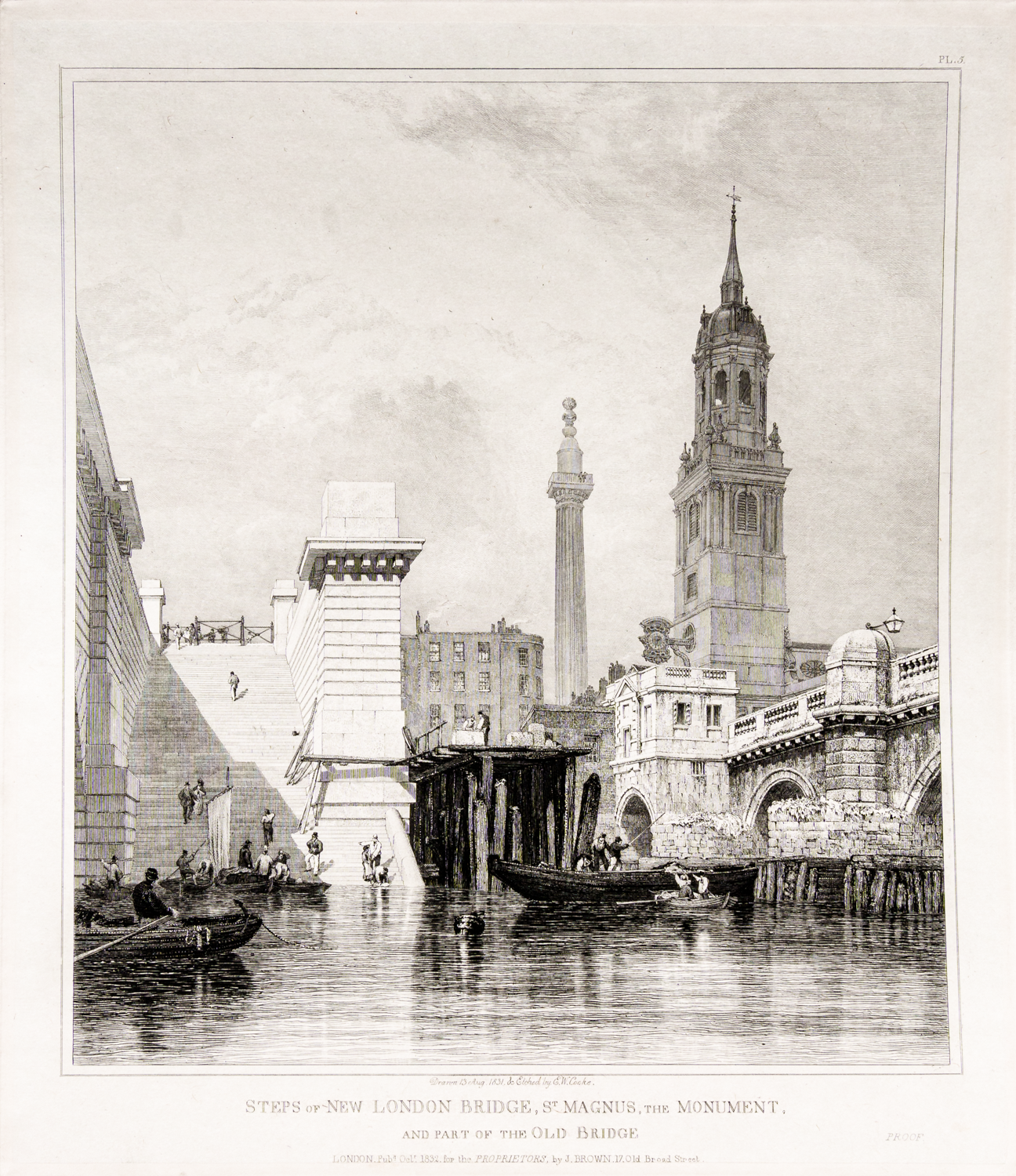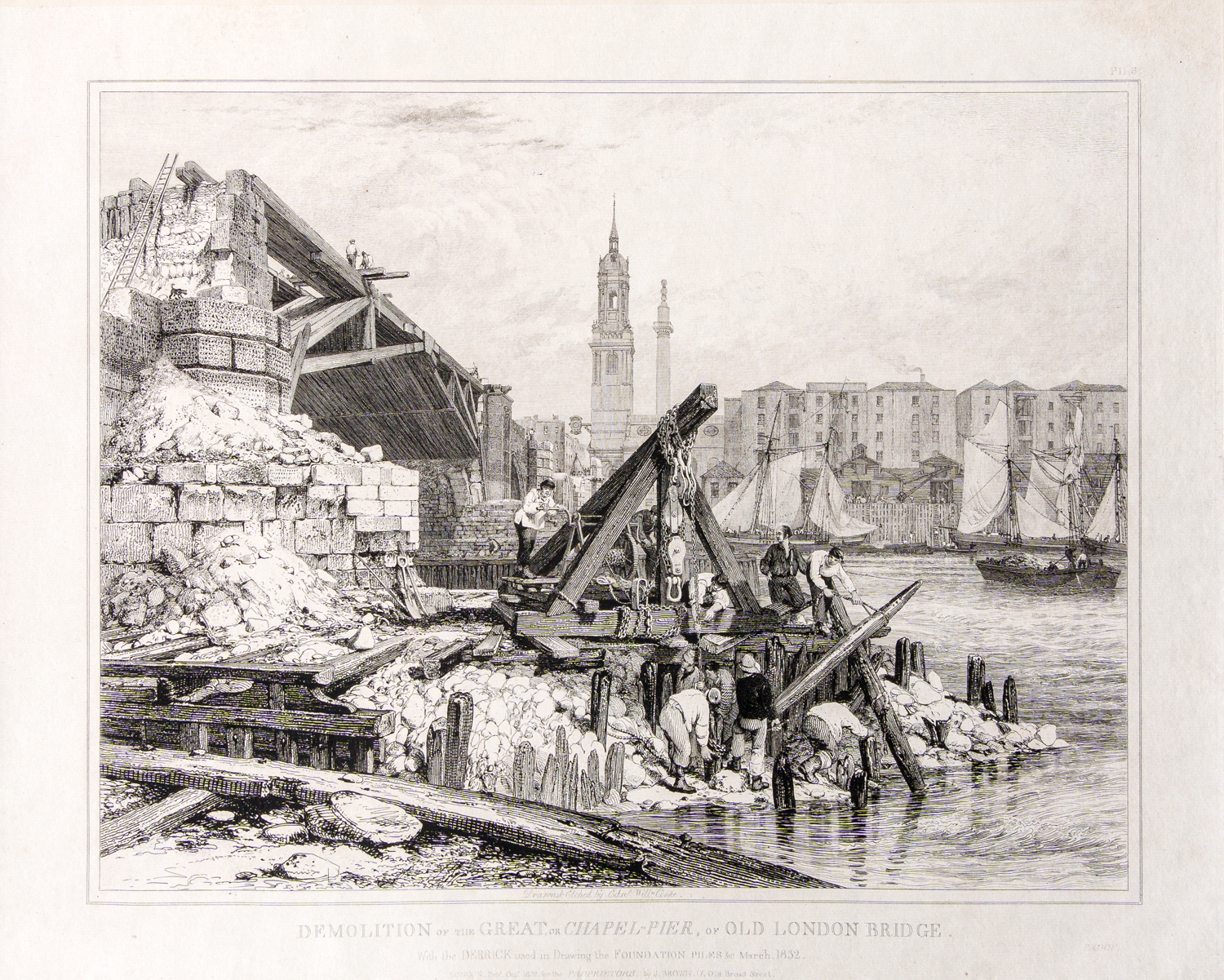
These twelve large high quality black and white etchings show the demolition of old London Bridge and the start of the construction of the New London Bridge close by. They are important as they show the area around the River Thames at a time when there were major engineering works such as bridges, tunnels and sewers being constructed in London. Edward Cooke RA (1811-1880) was the leading marine artist of the time and was responsible for these drawings and etchings. George Rennie (1791-1866) was the eldest son of civil engineer John Rennie (the Elder, 1761-1821) whose design won the competition for the construction of the new London Bridge.
The book includes the following description of the accompanying text:;
The text following the plates consists of: Historical Description Of Old London Bridge; Historical Account Of New London Bridge; Particulars Of The Total Cost Of London Bridge; Practical Remarks On The Arch - Bridge Building, &c.; Table Of The Principal Bridges In Europe; On The Former And Present State Of The Tides In The River Thames, In Consequence Of The Removal Of Old London Bridge. (Grosvenor Prints).
